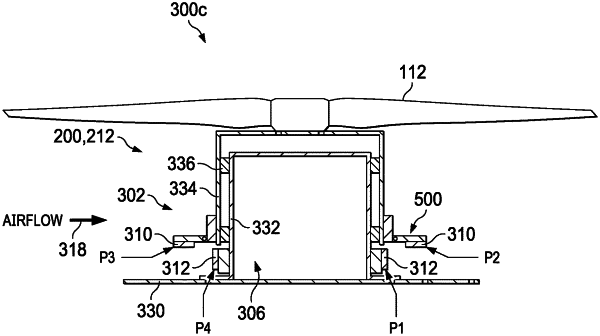| CPC B64C 27/30 (2013.01) [B64C 29/0025 (2013.01); B64D 27/24 (2013.01)] | 16 Claims |

|
1. A propeller assembly, comprising:
a rotating assembly comprising a propeller, the rotating assembly rotatably connected to a non-rotating member so as to rotate about a rotational axis relative to the non-rotating member;
one or more pairs of magnets comprising a first magnet mounted to the rotating assembly and a second magnet mounted to the non-rotating member, the second magnet forming an attractive magnetic interaction with the first magnet along an alignment direction; and wherein:
the propeller comprises one or more propeller blades;
in one of the pairs, the first magnet and the second magnet are positioned directly underneath one of the propeller blades in a stowed configuration; and
one or more distances along the alignment direction between the first magnet and the second magnet are adjusted so that:
the attractive magnetic interaction induces an alignment of the propeller in the stowed configuration when an angular velocity of the propeller is reduced below a predetermined value; and
a propeller torque, an output from a motor which drives the propeller at the angular velocity greater than the predetermined value, is greater than a force applied to the rotating assembly by the attractive magnetic interaction;
wherein:
the first magnet has a first pole;
the second magnet has a second pole magnetically attracted to the first pole and facing the first pole along the alignment direction in the stowed configuration, and
the alignment direction is perpendicular to the rotational axis.
|